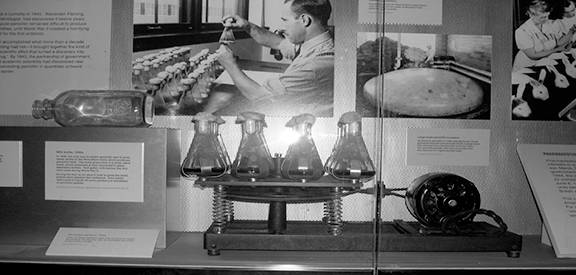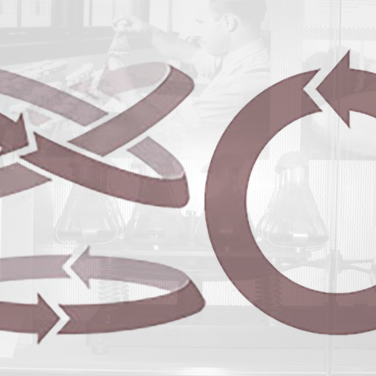Optimize Cell Growth with a Biological Shaker
For decades, shaking has been used to cultivate a variety of cells, including bacteria, fungi, and plant and animal cells in suspension. This agitation helps to increase the availability of nutrients and improve oxygen transfer, ultimately providing higher cell yields than static incubation.
Biological shakers help to automate and standardize this task. They’re an easy-to-use and inexpensive choice for basic applications like organism screening, media design, inoculum preparation, and early process development. It’s hard to imagine a biotechnology lab that doesn’t use shakers, but how can you use them to maximum benefit?
Here are a few things to consider when using a shaker to grow cells.
Agitation Modes
There are three different types of agitation to choose from: rocking, linear shaking, and orbital shaking. While these motions differ, they’re similarly achieved: liquid in a vessel is placed on a platform that moves in a particular manner, which agitates the liquid.
Rocking shakers move in either a two- or three-dimensional see-saw motion about a central point. This motion creates a wave-like mixing process that’s generally used for gentle mixing and incubation procedures, including DNA extraction, staining and de-staining, and washing blots and gels. For cell cultivation, you can even find specifically constructed rocking devices that allow mammalian cells to be cultivated in single-use bags.
Linear shakers, also known as reciprocating shakers, move the liquid back and forth in a single plane. These shakers have largely vanished from labs cultivating cells because of their primary drawback: While speeding up, linear shakers can cause unpredictable geyser-like eruptions that can wet the flask’s closure, potentially contaminating the sample and decreasing aeration.
Orbital shakers are the most common choice for cell expansion. These shakers rotate the platform in a circular motion, creating a consistent “swirl” pattern. They’re available with a variety of options for specific culturing demands, such as temperature control, photosynthetic lighting, and CO2 control.
Shaking Speed
Agitation not only improves oxygen transfer but also maintains homogeneous conditions in the medium through continuous mixing. In general, higher agitation speeds (as well as larger orbits) increase surface area for gas exchange, providing better aeration and higher yields.
However, higher speeds also lead to shear forces that can negatively influence microorganisms, potentially causing changes in morphology, variations in growth, and even cell death. While bacterial and yeast cells can withstand and even benefit from higher speeds, mammalian cells are more sensitive and require lower agitation speeds.

Agitation Orbit
Orbital shakers have common diameters of 19, 25, and 50 mm. As a rule of thumb, 19- and 25-mm orbits are still the standard in microbiology.
Larger orbits can increase the surface area of samples at speeds of 150 rpm and slower, so they’re useful when working with cells that are sensitive to shear forces. Larger orbits are also the best choice when working with vessels larger than two liters and wide vessels like Fernbach flasks.
But larger orbits and higher speeds don’t always lead to higher growth rates. Flask design, flask material, and filling volume are also important considerations.
Flask Design

Introduced at the beginning of the last century, shaker flasks have a variety of benefits. They’re available in a wide range of sizes from 25 mL to 5 L, making them applicable for a variety of experiments from screening and expansion to media design and early process development. And they’re affordable and suited to cultivation of bacteria, yeast, fungi, and plant and animal cells in suspension.
Typical Erlenmeyer flasks feature conical bodies, wider bases, and cylindrical necks. However, specialized designs can further improve gas exchange: Fernbach flasks offer wider bases that provide a large area for oxygen transfer, and Eppendorf Ultra Yield and Optimum Growth flasks feature optimized shapes that maximize surface-to-volume ratio.
Glass vs. Plastic
Both glass and plastic flasks have their benefits. For most classic microbiology applications, autoclavable glass Erlenmeyer flasks are a durable and reusable choice. But when contamination matters — as in production or handling sensitive cultures — sterile, single-use disposable flasks with 0.2 µm filter vented caps offer the most convenience and safety.
Filling Volumes
Lower filling volumes are best for cultures that have a greater need for aeration. By using a smaller percentage of a vessel’s total volume, you can create a larger surface area for gas exchange, which leads to higher cell yields.
As a rule of thumb, don’t exceed 20 percent of nominal flask capacity for microbial cultures. For maximum oxygen transfer, reduce filling volume to as little as 10 percent and increase rotational speed as much as your cells can withstand before succumbing to shear forces.
For mammalian cultures sensitive to shear forces, choose a fill volume between 30 and 40 percent and a shaking speed no higher than 150 rpm.
The Eppendorf Legacy
It all began in 1946 with the introduction of the first-ever orbital shaker by New Brunswick Scientific. Eppendorf has continued this tradition of innovation and reliability by also introducing new technologies. Manufactured with premium Eppendorf quality, New Brunswick lab shakers continue to take a leading position in virtually all global markets.

